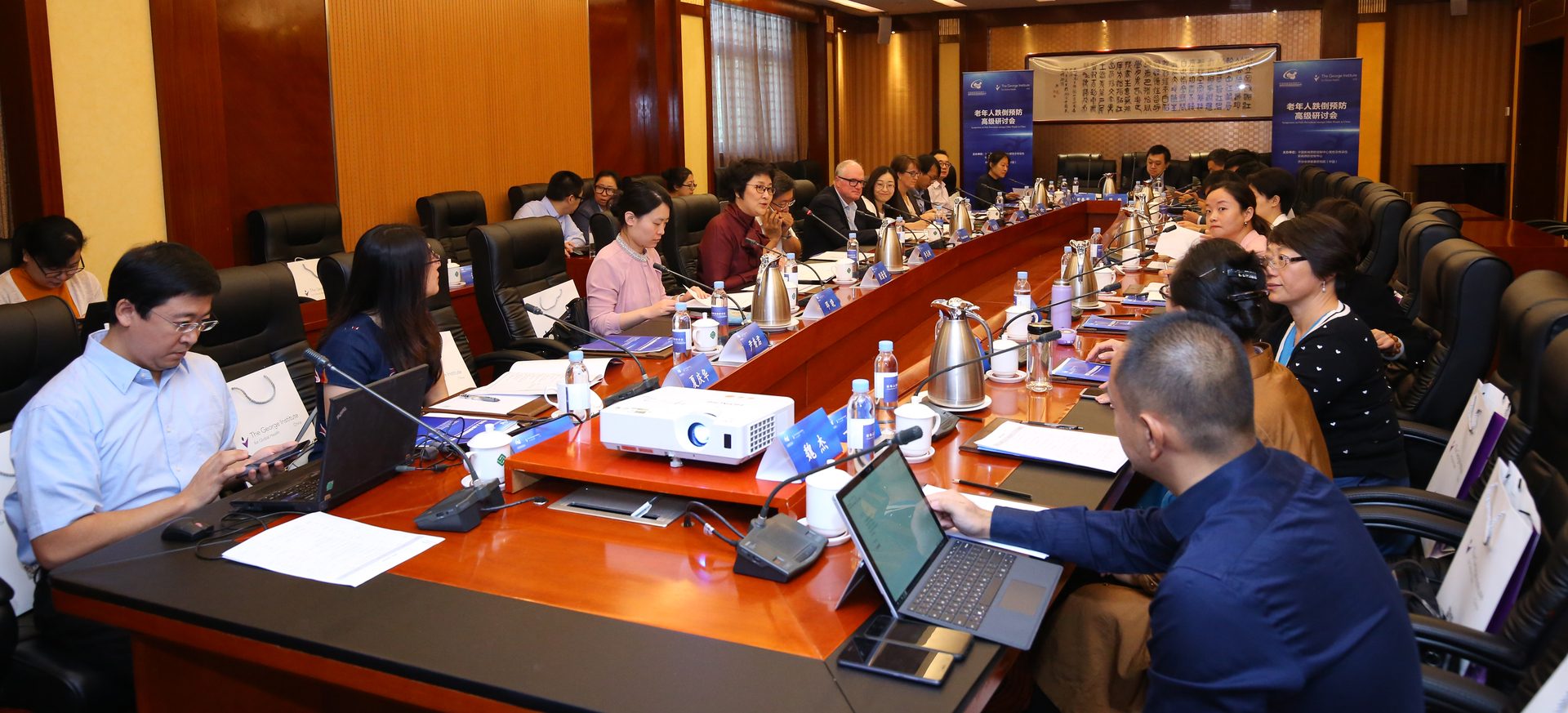
Risk of falls among older people is a real concern
The High level Symposium on Falls Prevention amongst Older People in China, co-organized by the National Center for Chronic and Noncommunicable Disease Control and Prevention (NCNCD) of China CDC and The George Institute China, was successfully held in Beijing on September 21, 2018.
As populations all over the world continue to age, falls are now a leading cause of injury and death among the elderly that is in those over the age of 65 years. The elderly who fall may experience an injury, and while for most this relatively minor – bruise, abrasions or joint dislocation – but often there are more serious consequence such as a fracture and craniocerebral trauma, which can led to further adversity form the complications of surgery. The health problems related to falls in the elderly are an increasing concern to healthcare professionals and policy makers. Falls impact on daily activities and capacity for independent living, and are having an increasing economic burden on families and society.
The symposium was hosted by Duan Leilei, Director of the Injury Prevention and Control and Mental Health Division of the NCNCD. At the beginning of the symposium, Li Zhixin, Secretary of the NCNCD, and Professor Craig Anderson, Executive Director of the George Institute China, expressed their warm welcome to the participants and emphasized the importance of programs targeting falls prevention to maintain the health and wellbeing of the elderly.
Subsequently, Duan Leilei and Professor Lisa Keay, Injury Program Director of The George Institute for Global Health Australia, shared their knowledge and current situation of research and services for falls prevention in China and Australia. Interdisciplinary experts exchanged knowledge and ideas on falls prevention from the area of public health, clinical care, assistive devices and the elderly friendly environment respectively.
During the symposium, domestic and foreign experts from relevant fields conducted extensive exchange and in-depth discussion from the perspectives of current policy and activities on falls prevention, prevention service models, and flow of elderly patients through different hospital services, as well as of existing techniques and research on falls prevention, proposed strategies and suggestions for establishing and improving relevant policies, and in particular, of sustainable systematic fall prevention services incorporating technology and quality evidence.
Finally, Li zhixin concluded, "We are especially pleased that this meeting has provided a platform for interdisciplinary experts to exchange knowledge and ideas on falls prevention in the elderly. In-depth discussions at this symposium will undoubtedly contribute to the advancement of falls prevention in the elderly and influence policies on chronic disease prevention and control.”
More than 30 people attended the symposium, including representatives from National Health Commission, Social Welfare and Charity Promotion Division of Civil Affairs Ministry, Rehabilitation Department of China Disabled Persons' Federation, as well as domestic and foreign experts from relevant fields.



